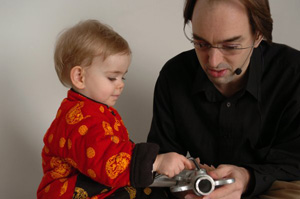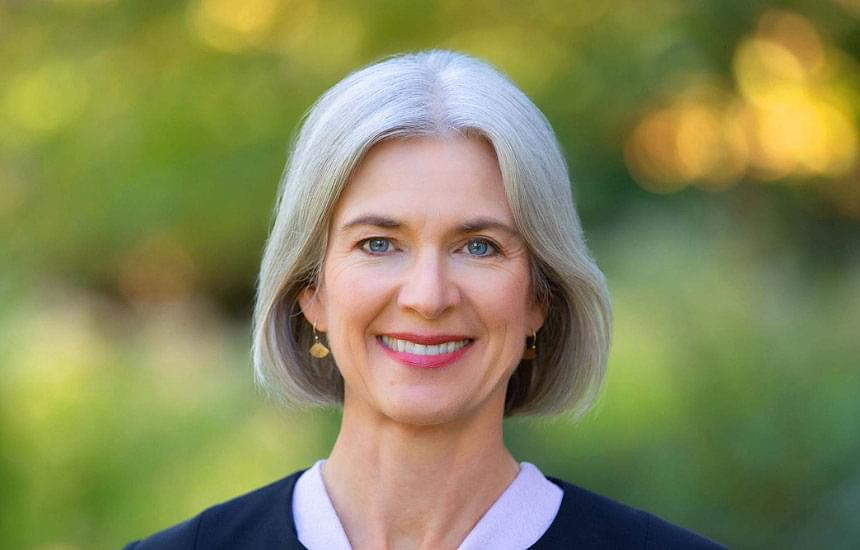2024 Guardian Award Winners bring Sousveillance and Ethical Gene Editing to Humanity
As we near the Singularity, more and more people are preparing for the upcoming existential risks, and therefore this year we again have two joint recipients of the Lifeboat Foundation Guardian Award, for the fourth time in our history. This year’s recipients are Steve Mann and Nobel Laureate Jennifer Doudna. It is worth noting that last year’s Guardian winner, Geoffrey Hinton, was awarded the Nobel Prize within a year of winning our prestigious award.
Steve Mann promotes sousveillance as a solution to existential risks and Jennifer Doudna is engaged in ethical discussions about gene editing, and its potential for bioterrorism.
Steve Mann
Sousveillance is security and safety monitoring and intelligence gathering by ordinary citizens. Surveillance is security & safety monitoring and intelligence gathering by those with power, especially governments.
Steve Mann coined the term sousveillance in 1998 and now the word has entered the OED (Oxford English Dictionary) so this concept (safeguarding humanity and Earth with undersight not just oversight) has entered the mainstream as thousands of articles build upon his work.
Our SecurityPreserver program, launched in 2006, is designed to prevent nuclear, biological, and nanotechnological attacks from occurring by using surveillance and sousveillance to identify terrorists before they are able to launch their attacks. So we have been supporting Steve’s ideas for about two decades. (Without sousveillance, governments can be engaged in bad activities.)
“Steve Mann is the perfect example of someone… who persisted in his vision and ended up founding a new discipline.” — Nicholas Negroponte, Founder, Director, and Chairman, MIT Media Lab
Steve was recognized as “The Father of The Wearable Computer”, by the IEEE ISSCC in 2000, having created the first general-purpose wearable computer, in contrast to previous wearable devices that perform one specific function such as time-keeping.
Steve won the 2025 Ibuka Award, joining past winners as Apple founder Steve Wozniak, Linux creator Linus Torvalds, and Marty Cooper, the inventor of the cellphone. He gave the Keynote on Mersivity for safeguarding humanity and Earth.
Mersivity is eXtended Reality (XR) that connects us to each other and our surroundings (environment). Mersivity is tech/XR that is doubly immersive, i.e. it is immersive tech that can itself be immersed. Mersivity regards technology as a vessel that immerses us yet is itself immersive in such a way as to connect us to each other and our surroundings.
Together with Marvin Minsky and 2005 Guardian Award winner Ray Kurzweil, Steve proposed the theory of the Sensularity Sensory Singularity and cyborg-logging.
His inventions include Chirplet transform, Digital Eye Glass (a device that, when worn, causes the human eye itself to effectively become both an electronic camera and a television display), Comparametric equations, High-dynamic-range imaging (HDR), and the Hydraulophone.
Steve also invented Integral kinematics and integral kinesiology. These are the principles of negative derivatives (integrals) of displacement, such as absement (the area under the displacement-time curve), as embodied by hydraulophones (water-based instruments). This work has been built upon by others, and also forms the basis for a new way of understanding electrical engineering.
He also invented natural user interfaces, scratch input, the Surveilluminescent wand (a device for visualizing vision and seeing sight, by way of making visible the sightfield [time-reversed lightfield] of a camera or similar computer vision sensor, using time-exposure with an array of surveilluminescent lights to make visible to one camera what another camera can see), the Telepointer and SixthSense, and the Video Orbits algorithm.
Steve is author of Cyborg: Digital Destiny and Human Possibility in the Age of the Wearable Computer.
Jennifer Doudna
Nobel Laureate Jennifer Doudna was the inventor of CRISPR. She has engaged in ethical discussions about gene editing, and its potential for bioterrorism, especially in her book A Crack in Creation: Gene Editing and the Unthinkable Power to Control Evolution.
The New Yorker reported:
“The promise of her work on CRISPR, however, has persuaded her to remain in the lab. She told me that she was constantly amazed by its potential, but when I asked if she had ever wondered whether the powerful new tool might do more harm than good she looked uncomfortable. “I lie in bed almost every night and ask myself that question,” she said. “When I’m ninety, will I look back and be glad about what we have accomplished with this technology? Or will I wish I’d never discovered how it works?”
Her eyes narrowed, and she lowered her voice almost to a whisper. “I have never said this in public, but it will show you where my psyche is,” she said. “I had a dream recently, and in my dream” — she mentioned the name of a leading scientific researcher — “had come to see me and said, ‘I have somebody very powerful with me who I want you to meet, and I want you to explain to him how this technology functions.’
So I said, Sure, who is it? It was Adolf Hitler. I was really horrified, but I went into a room and there was Hitler. He had a pig face and I could only see him from behind and he was taking notes and he said, ‘I want to understand the uses and implications of this amazing technology.’ I woke up in a cold sweat. And that dream has haunted me from that day. Because suppose somebody like Hitler had access to this — we can only imagine the kind of horrible uses he could put it to.”
Jennifer is an American biochemist who has pioneered work in CRISPR gene editing, and made other fundamental contributions in biochemistry and genetics. She received the 2020 Nobel Prize in Chemistry, with Emmanuelle Charpentier, “for the development of a method for genome editing.” She is the Li Ka Shing Chancellor’s Chair Professor in the department of chemistry and the department of molecular and cell biology at the University of California, Berkeley. She has been an investigator with the Howard Hughes Medical Institute since 1997.
In 2012, she and Emmanuelle Charpentier were the first to propose that CRISPR-Cas9 (enzymes from bacteria that control microbial immunity) could be used for programmable editing of genomes, which has been called one of the most significant discoveries in the history of biology. Since then, she has been a leading figure in what is referred to as the “CRISPR revolution” for her fundamental work and leadership in developing CRISPR-mediated genome editing.
Jennifer’s awards and fellowships include the 2000 Alan T. Waterman Award for her research on the structure of a ribozyme, as determined by X-ray crystallography and the 2015 Breakthrough Prize in Life Sciences for CRISPR-Cas9 genome editing technology, with Charpentier. She has been a co-recipient of the Gruber Prize in Genetics (2015), the Tang Prize (2016), the Canada Gairdner International Award (2016), and the Japan Prize (2017). She was named one of the Time 100 most influential people in 2015, and in 2023 was inducted into the National Inventors Hall of Fame.
Important quotes from Jennifer (all written in A Crack in Creation) include:
“Weighing the dangers inherent in a technology like CRISPR against the responsibility to use its power for the benefit of humanity and our planet will be a test like no other. Yet it’s one that we must pass.”
“The power to control our species’ genetic future is awesome and terrifying. Deciding how to handle it may be the biggest challenge we have ever faced.”
“We must break down the walls that have previously kept science and the public apart and that have encouraged distrust and ignorance to spread unchecked. If anything prevents human beings from rising to the current challenge, it will be these barriers.”
“Society cannot make decisions about technologies it doesn’t understand, and certainly not about those it knows nothing about.”

